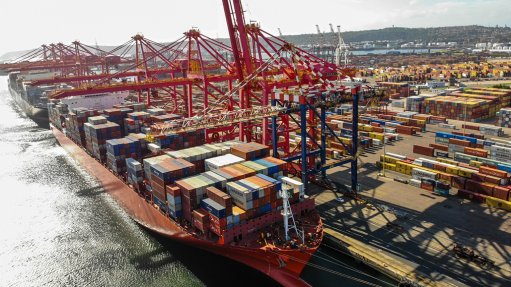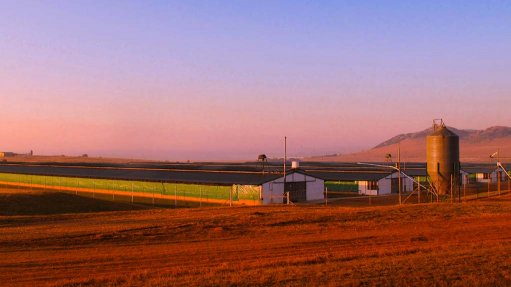Sat-3, WACS cable breaks in 2020 likely caused by mudslide
The cable breaks on the South Atlantic 3/West Africa (SAT-3/Wasc) cable and the West Africa Cable System (WACS), in 2020, were likely a result of the occurrence of the longest undersea mudslide recorded.
In January 2020, the SAT-3 cable, which links Africa to Portugal and Spain, was hit by a breakdown in Gabon, while the WACS cable, which links South Africa to the UK, experienced a break off the coast of the Democratic Republic of Congo, causing widespread disruptions to the international network and data connectivity.
A joint international recovery and repair effort was initiated to restore the faulty cable systems.
The SAT-3 cable broke again in March 2020 at the same canyon-floor location as the break in January 2020, although the two branches of the WACS cable continued to function.
the repair of the cable cuts, efforts were then focused on recovering the sensors and cable mooring data sets.
The study, ‘Novel sensor array helps to understand submarine cable faults off West Africa’, which used seabed sensors and mooring data sets in the Congo Canyon off West Africa, suggests that the cable fault on the SAT-3 was likely caused by an exceptionally large and powerful submarine mudslide that originated at the mouth of the Congo river, ten days after the river recorded its largest flood since the 1960s.
The study was undertaken by Professor Peter Talling and a research team from the departments of Earth Sciences and Geography at the University of Durham, in the UK, co-led by Angola Cables and supported by industry members, including the Vodafone Group, British Telecom and NERC Environmental, besides others.
“The data that we recovered from the seabed sensor and mooring data sets within the Congo Canyon have revealed that the undersea mudslide is possibly the longest recorded sediment flow yet measured in action on our planet,” Talling and his team observe.
“The two cable-breaking flows occurred in the Congo Submarine Canyon some two to ten weeks after a 1-in-50-years (2% a year exceedance probability) flood along the Congo river, and coincident with unusually large spring tides,” the study highlights.
Sand and mud from the river flood was presumably remobilised, triggering the submarine mudslide that flowed through the offshore Congo Canyon.
The coincident location of the March SAT-3 break, where it crosses the floor of the canyon, suggests that the break was due to a second powerful and long runout turbidity current.
The canyon is one of the largest underwater canyons on earth, cutting across the continental shelf of West Africa for 85 km until it reaches the shelf edge, then continues down the slope and ends 280 km from its origin. At its deepest point, the V-shaped canyon walls are 1 100 m in height.
The study notes that the January 2020 event caused nine oceanographic moorings to surface. By combining the timings of when moorings reached the sea surface and the cable breaks, Talling and his team were able to calculate the flow speed of the massive undersea avalanche.
“It has been estimated that, following the initial mudslide in the canyon, the moving sediment increased in speed from 5 m/s in Angolan waters in the upper canyon to reach 8 m/s in the deep ocean, at water depths of 4 km to 5 km and running out some 1 200 km from the river mouth.”
The study also provided valuable scientific insights into how the subsea cable industry can better provide more durable solutions in keeping these critical cables connected.
It is estimated that around 1.2-million kilometres of subsea cable carrying power and transmitting data currently transverse continents and geographies across the world. Most of these cables are either buried in the seabed or rest on the ocean floor.
Every year, more than a hundred cable breaks are recorded across the world, causing disruptions to communications and connectivity. Three such incidents impacted users on the African continent in 2020 alone.
Nearly 75% of the damage caused to these cables is the result of being snagged or damaged by the anchors of ships. Deep-sea cable faults in water depths of more than 1 000 m below the sea level are almost always caused by natural events such as current abrasion, underwater landslides and underwater seismic activity.
“Depending on the proximity of cable repair vessels, outages can often take a number of weeks to repair, resulting in costly losses to economies impacted on by such breaks,” notes Talling.
“Gathering evidence and the recorded data in studies such as these are critical to understanding the nature of such subterranean events and how the subsea cable industry can better provide more durable solutions.
“These powerful mudslides that damage seabed cables are notoriously difficult to measure in action and are thus poorly understood” the paper points out.
Comments
Press Office
Announcements
What's On
Subscribe to improve your user experience...
Option 1 (equivalent of R125 a month):
Receive a weekly copy of Creamer Media's Engineering News & Mining Weekly magazine
(print copy for those in South Africa and e-magazine for those outside of South Africa)
Receive daily email newsletters
Access to full search results
Access archive of magazine back copies
Access to Projects in Progress
Access to ONE Research Report of your choice in PDF format
Option 2 (equivalent of R375 a month):
All benefits from Option 1
PLUS
Access to Creamer Media's Research Channel Africa for ALL Research Reports, in PDF format, on various industrial and mining sectors
including Electricity; Water; Energy Transition; Hydrogen; Roads, Rail and Ports; Coal; Gold; Platinum; Battery Metals; etc.
Already a subscriber?
Forgotten your password?
Receive weekly copy of Creamer Media's Engineering News & Mining Weekly magazine (print copy for those in South Africa and e-magazine for those outside of South Africa)
➕
Recieve daily email newsletters
➕
Access to full search results
➕
Access archive of magazine back copies
➕
Access to Projects in Progress
➕
Access to ONE Research Report of your choice in PDF format
RESEARCH CHANNEL AFRICA
R4500 (equivalent of R375 a month)
SUBSCRIBEAll benefits from Option 1
➕
Access to Creamer Media's Research Channel Africa for ALL Research Reports on various industrial and mining sectors, in PDF format, including on:
Electricity
➕
Water
➕
Energy Transition
➕
Hydrogen
➕
Roads, Rail and Ports
➕
Coal
➕
Gold
➕
Platinum
➕
Battery Metals
➕
etc.
Receive all benefits from Option 1 or Option 2 delivered to numerous people at your company
➕
Multiple User names and Passwords for simultaneous log-ins
➕
Intranet integration access to all in your organisation


















